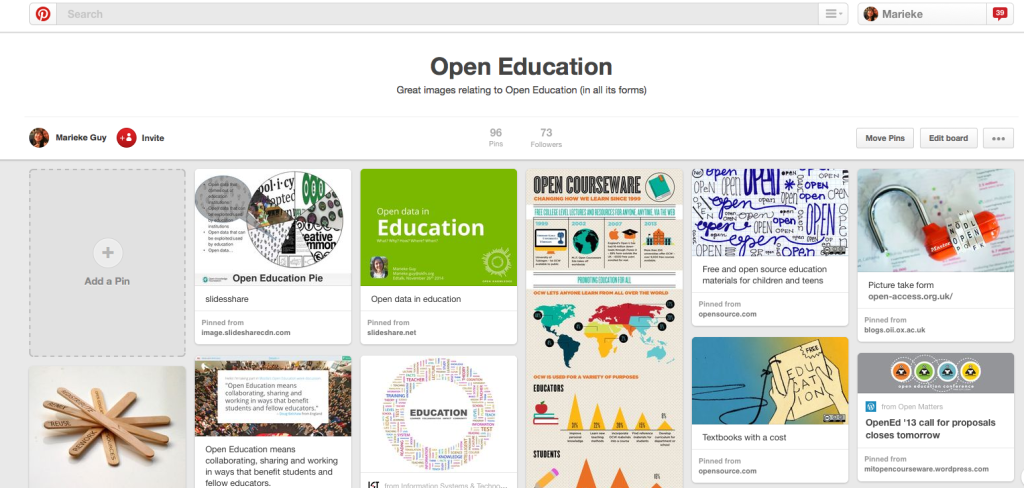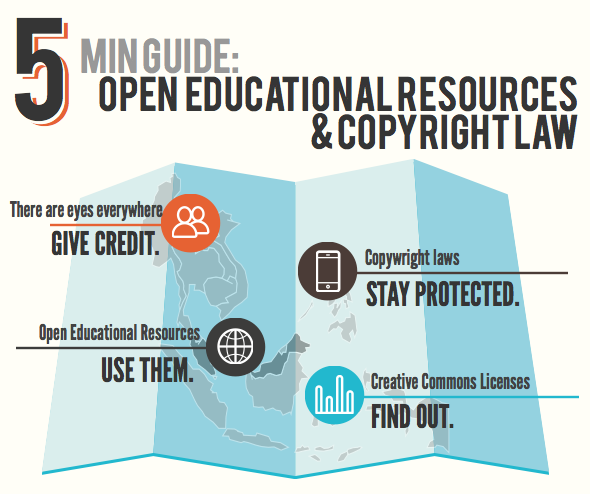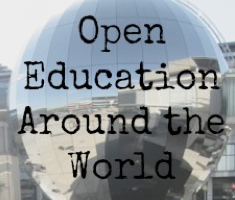Illustrating Open Education
So what is your mental image when you think of Open Education? Is it open books, or huge amounts of data flowing, or children using ipads? Or is it the Open Education week logo, or even our Open Education Working Group logo?
Quite often I need to illustrate blog posts, reports or presentations with an image that symbolises Open Education and I have a few go-to places I thought I’d share:
Flickr
Flickr has some great Open Education images and the best bit is the licensing is very clear. I tend to search for the term I’m interested in and then make sure I’m selecting the appropriate open licence.
Pinterest is a great place to look for images, but also a great places in which to store links to images. I have created a board for all my favourite Open Education pictures, there are almost 100 pictures on it now. Be careful to check the licensing of images when you reuse them though.
Pixabay
Pixabay has a wealth of free openly licensed images. Many are CC0 Public Domain but a few come from Shuttleshock so be careful when reusing.
Infographics
They are everywhere but it is so easy to make your own infographics to illustrate your work. My favourite tools at the moment are:
- Infogram: https://infogr.am
- Easel.ly: http://www.easel.ly/
- Piktochart: http://piktochart.com/
So for example this image below is taken from a Piktochart presentation on OERs created by Alicia Johal (CC-BY-ND).
Using Images
A quick word on using images. I know I’m preaching to the converted here…but as Open Education practitioners we really want to be participating in best practices. So when possible attribute images, add a link to the source and use the licence!! You know it makes sense!
So anyone else have any other suggestion?? Do post below!
 Open Education Working Group
Open Education Working Group 







Some suggestions for mental images of Open Education: https://twitter.com/MobilePedagogy/status/630740603245080577
Also great to hear that it has been added as further reading for the @OEPScotland course on #OER :
https://twitter.com/BeckPitt/status/630712494554763269
Great post!
Google advanced image search is also helpful: http://www.google.com/advanced_image_search
Just scroll down in advanced search and set “usage rights” parameters to be “Free to use, share, or modify”
My usual source is Wikimedia Commons. When I prepare slides for a course, say, I will do keyword searches there until I find what I need. I then use the snippet for giving credit and add that to my slides.
But there’s another neat resource which might be much less known. CCDMD’s World of Images:
http://monde.ccdmd.qc.ca/?lang=en
CCDMD is a Quebec organisation creating learning material for the college system in that province. “World of Images” («Le monde en image») is a bilingual catalogue of pictures and videos which are shared as CC-BY-NC-SA.
http://monde.ccdmd.qc.ca/droits/
It contains all sorts of resources which are meant to be used for educational purposes. Some of them were selected for use in CCDMD’s textbooks while others come from photo contests or even from individual collections.
Personally, I’d say finding the right resources to use is the trickiest problem. Some commercial stock photo services have elaborate ways to ease out the process, but it remains difficult. Part of the solution could be through the Semantic Web.
In fact, I work for Vitrine technologie-éducation, a non-profit also connected to Quebec’s college system. Ceres, our OER catalogue, is itself part of the Semantic Web. It indexes thousands of these CCDMD resources (along with many others), using a local version of the Learning Object Metadata (LOM) standard.
http://ceres.vteducation.org/?lang=en
In the next few months, we’ll be working with teachers on an exploration of OERs. Chances are that looking for relevant visuals for use in educational material will be among key issues we’ll tackle.